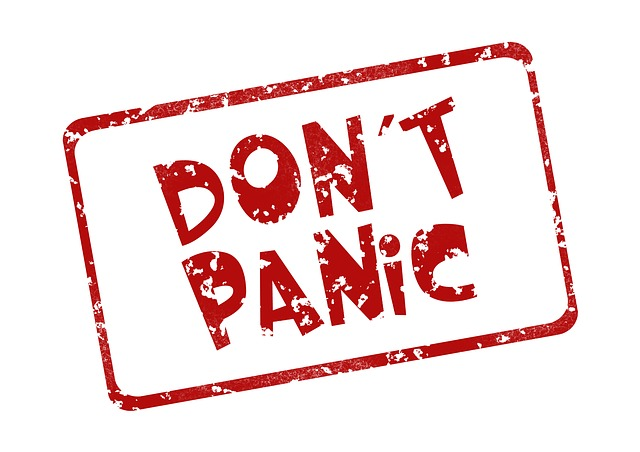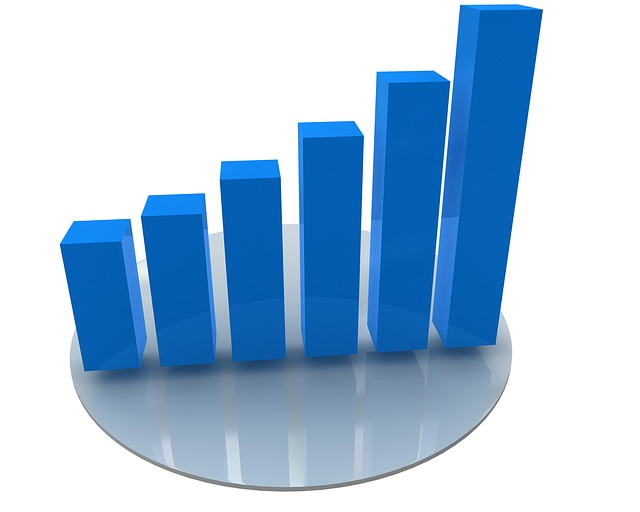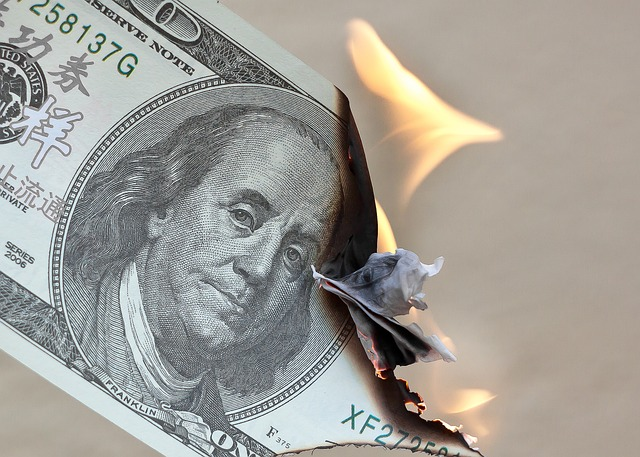Diving deep into the complex waters of economic theory might not be your idea of a good time.
Unless, of course, you're an investor who recognizes that understanding inflation is akin to being handed a treasure map in the world of finance.
Inflation isn't just another mundane economic term. It's a financial force that shapes monetary policy, drives markets, and can make or break portfolios.
In this guide, we embark on a journey through the tumultuous terrains of inflation.
Prepare to learn how to both survive and thrive in the face of rising costs of living.
Through a collection of actionable insights, noteworthy economic analysis, and how to best position yourself for success in its shadow.
Inflation: More Than a Rising Tide
At its core, inflation is the silent and stealthy thief; that erodes your purchasing power without so much as a whisper.
However, it's also a catalyst for economic growth and a measure of the health of our fiscal policies.
Let's break it down into manageable bites.
The Inflation Equation
In a nutshell, the annual inflation rate is the annual rate, at which prices for goods and services rise over time.
This isn't just about economics; As you're about to discover, its personal.
Those innocent-looking percentage points on a government report can send shockwaves through your financial planning. So, how is this sneaky thief measured?
A Little Mathematical Backdrop: Consumer Price Index
CPI (Consumer Price Index) is the canvas on which the magic—or mayhem—of inflation is painted.
It tracks the change in prices of a basket of goods and services that are typically purchased by consumers.
This includes everything from groceries to healthcare to transport to electricity costs. You get it.
CPI sets the stage for inflation expectations in a volatile economy dance.
As the measured change in the price index from year to year; within this basket of consumer of goods and services tells us how inflation is performing. So, what exactly is this basket of goods and services?
This includes everyday necessities such as food, clothing, housing, transportation,Gas, electricity, fuel, household items, and health care. The prices of these items are gathered monthly to calculate the hike.
Fluctuations in these expenses significantly affects your purchasing power since they are fundamental for survival.
The Double-Edged Sword: Inflation’s Effects

Inflation wields an omnipresent influence on a healthy economy. However, it’s most felt across the financial sector.
So, how does inflation measure and weave its way through the economy, for better or worse.
Decreased Purchasing Power: The Silent Siphon
Inflation operates like an unseen hand, slowly reducing the value of your money.
Ensuring your dollar today won't stretch as far tomorrow due to increasing costs.
The phenomenon of inflation plays a crucial role in financial decision-making, necessitating a careful consideration of opportunity costs.
This has a detrimental impact on individuals living on fixed incomes or those with limited financial resources.
Rising Prices: The Domino Effect
If the price increases or the cost of raw materials increases due to inflation, then the price of a finished product will also increase to cover these additional expenses.
This cascading effect can lead to decreases in purchasing power as prices inevitably rise.
This leads to a domino effect as businesses pass along their increased production costs to consumers in the form of higher prices.
The Cost of Living Quandary
What does this mean for the average household?
Imagine a world where grocery bills get heavier with higher prices, and fuel more expensive.
Production costs will inevitably rise leading to general increase in prices across various industries and sectors.
As you know, we live in a capitalistic economy, therefore these rising costs willtrickle down to consumers.
As a result, consumer prices go up, housing prices up, and rent grows taller.
This isn’t just hypothetical, it's a reality.
In the worst case scenario; cost of the essentials escalate rapidly with too few goods, leaving consumers with budgetary belts tighter than ever before.
Putting the Squeeze on Investments and Savings
Inflation isn’t picky; it doesn’t discriminate between the cash under your mattress or the bonds in your investment portfolio.
When the economy heats up, so does consumer demands and suddenly those low-risk, low-return investments aren’t looking so attractive after all.
The impact on savings accounts is equally brutal - your hard-earned nest egg could be losing its luster quicker than you can say “interest rate hike.”
As the inflation rate rises the price tag of investment dwindles and the rate of return becomes questionable.
Even worse is the doom and gloom that surrounds the economy, mass panic sell offs depress stock prices. And that’s not good news either as our never rising wages is all we’ve to work with.
How Higher Inflation Causes Higher Interest Rates

Interest rates are the thermostat for inflation, and the Federal Reserve holds the dial.
When inflation starts heating up, the Fed typically responds by raising interest rates. This move slows borrowing, reduces spending, and in turn, control inflation and price levels.
Once inflation is tamed, lowering interest rates is used to achieve the opposite effect of inflation; and try and pump life into the economy.
But what does all this mean for investors like you and me?
Impact on Debt Market
For Bond holders:
Price rises and higher interest rates can initially mean a scramble to adjust portfolios and accept a temporary loss in the value of your bonds.
On the flip side, as interest rates rise, newly issued bonds will bear a higher yield, leading to a decrease in bond prices. This scenario eventually benefits long-term investors who exhibit patience. And of course those who were seating on cash to seize the moment.
Real Estate Reality Check
With mortgage rates in the mix, real estate is one of the most sensitive markets to inflation.
Higher rates can lead to reduced home affordability, higher housing prices everywhere, increased rents, and a slowing market.
However, for those already on the property ladder, the value of real property often appreciates with inflation, making it a hedge of sort against interest rates.
The Benefits of Inflation: Seeking the Silver Lining
It’s not all doom and gloom. Believe it or not, inflation has its perks, particularly for the pro-active investor who knows where to look.
How Can I Benefit From Inflation?

The trick is to ensure that your investments outpace the inflation rate.
This means saying goodbye to the venerable savings account and beefing up your portfolio with growth investments.
One way to do this is by investing in stocks, which have historically outperformed inflation.
Another option is real estate, as property values tend to increase with inflation.
Commodities such as gold and oil can also act as a hedge against inflation as they’re a store of value for your money.
In addition, if you hold fixed-rate debt (such as a mortgage or student loan), inflation can actually work in your favor by decreasing the real value of your debt over time.
This implies that though your debt amount remains unchanged, its true value significantly reduces; making it easier for you to pay off in the long run.
Cash equivalents are the most vulnerable, as their returns may not keep up hence reducing their purchasing power.
stocks and real estate can be considered as potential hedges against rising inflation.
During periods of high inflation, stocks often exhibit strong performance. This is because businesses can boost their prices and revenues to offset escalating costs.
Real estate on the other hand appreciates in value during times of inflation, making it a potentially profitable investment option.
However, it's important to carefully consider your risk tolerance and financial goals before making any investment decisions based on market performance.
Promoting Economic Growth:
Inflation can be the whip that quickens the pace of the economic activity and growth.
As the government intervenes to stabilise the economy and tame inflation: The improved economy typically experiences lower inflation, subsequently leading to economic growth.
This often leads to increasing wages and enhanced corporate profits. Thereby bolstering the stock market hence eventual economic growth.
Reducing Debt Burden
Inflation makes past loans easier to not too much money to pay off, effectively reducing the real (inflation-adjusted) value of debt.
This can be a silver lining in economic downturn for both individuals and governments, providing a softening touch amidst a financial tempest.
As inflation rises, debtors are paying back loans with dollars that are worth less than the dollars they borrowed.
This can ease the burden of debt repayment and free up funds for other economic activities.
On a larger scale, this also applies to government debt. When inflation increases, the value of outstanding government bonds decreases in real terms.
This means that governments owe less in real value than they initially borrowed, allowing them to potentially reduce their debt burden and redirect funds towards stimulating economic growth.
Exploring the Debate: Is Inflation a Friend or Foe?
The jury is still out on inflation's moral placement in the global economy. Is it the bane of existence for the common investor, or a celestial boon? The answer, as always, is: it depends.
For some, inflation may be seen as a necessary evil. It can help stimulate economic growth by encouraging spending on investments, which in turn leads to job creation and higher wages. This is especially beneficial for countries.
Inflation can also create uncertainty, as it is difficult to predict its fluctuations and its impact on different sectors of the economy.
As certain groups, especially those on fixed incomes or with limited savings, are more vulnerable to the negative impacts of inflation.
As the rising prices erode purchasing power, making it difficult to afford basic necessities and disrupting their financial plans.
What Causes Inflation?
Inflation isn't a one-trick pony; it has a multitude of drivers, each capable of significantly influencing its trajectory.
Supply and Demand Dynamics
At its simplest, inflation can be caused by high aggregate demand and money supply, or consumer price inflation due to low supply.
An economy that’s firing on all cylinders might suddenly see a jump in consumer prices when production can’t keep up with demand.
Global factors such as trade restrictions, war or scarcity of raw materials can too contribute to inflation.
Monetary Policy Meets Fiscal Policy
The decisions taken by the central bank influences inflation rates. As the inflation occur the central bank can hike or lower interest rates. cost push inflation up
Lower interest rates make it easier for individuals and businesses to borrow money and spend more.
On the other hand, if the central bank decides to raise interest rates, it becomes more expensive for individuals and businesses to borrow hence having less to spend.
The government on the other hand reinforces measures such as taxation, government spending, and trade restrictions.
Trade restrictions imposed negative effects on borrowing and consumer spending, ultimately slowing down economic growth.
This is where monetary policy meets fiscal policy.
While monetary policy is controlled by the central bank, fiscal policy is set by the government through its budgetary decisions.
Fiscal policy includes setting taxes, spending levels, and borrowing guidelines for businesses and individuals.
Printing more money to raise interest rates without a proportional increase in goods and services, for instance, can lead to more dollars chasing fewer products, igniting inflation.
As a result, the role of central banks and governments are important in this predicament to maintain a balance between the two.
How Inflation Impacts Investors
For the discerning investor, the key lies in adaptation.
Inflation and deflation are cyclical and thus, it’s important to understand these phases will come and go.
In these happenings, the most important thing is to outlive them as an investor.
So, how do you do it?
Asset Allocation Strategies
Diversification is your best defense against the ravages of inflation. By spreading your investments across different asset classes, you can better insulate your wealth from the worst that inflation has to offer.
Strategies for Protecting Wealth
Treasury Inflation-Protected Securities (TIPS) were introduced by the U.S. government precisely to offer protection against inflation.
Other hedge-like strategies, such as inflation-indexed bonds, variable rate investments, or even commodity investments, can form a solid line of defense against the devaluing dollar as inflation rises and rising commodity prices.
Identifying Investment Opportunities
Some sectors of the market, such as technology, are more insulated from the effects of rising inflation though.
By identifying and investing in companies that offer high consumer demand for products and services considered to be essential or somewhat immune to the effects of inflation-ary pressures, you position yourself as a savvy scout.
Tips for Navigating Inflation's Impact on Your Finances
Staying one step ahead of inflation might sound like the ultimate cat-and-mouse game.
With the right approach, you can not only well manage inflation and its impact on production costs, and fixed income, but also potentially leverage it for your gain.
Strategic Spending in an Inflation-Prone World
Be strategic in your spending.
Operating on a fixed income in inflationary environment; durable goods with, long life and low maintenance value can be a better use of your funds than those which are rapidly consumed.
Simply put: get the most value out of your every penny.
Reevaluating Your Retirement Plan
If you’ve got a retirement account, consider trading in stagnant cash and bond holdings for more aggressive growth funds.
They typically perform well in lower inflation-ary periods, offering a form of natural insurance against devaluing currency.
The Role of the Stock Market in Inflation
The stock market is often a net winner in inflationary periods, with certain sectors benefiting from rising prices more than others.
By carefully selecting your stocks and potentially leveraging industry trends and rising prices, you could turn inflation into an unexpected boon for your portfolio.
Conclusion: The Need for Proactive Planning in Inflation's Shadow
In conclusion, the astute investor recognizes the dangers and possibilities that come with high inflation everywhere.
Our economy is a pendulum, forever swinging between the twin poles of growth and high inflation hurts, and being caught unprepared could cost you dearly.
By understanding the forces at play, and employing the wealth of strategies available, you can not only shield your investments control the effects of inflation, but grow them in an inflationary environment.
Remember, the tides come and go: Will you outlive them?
Happy investing!




0 Comments